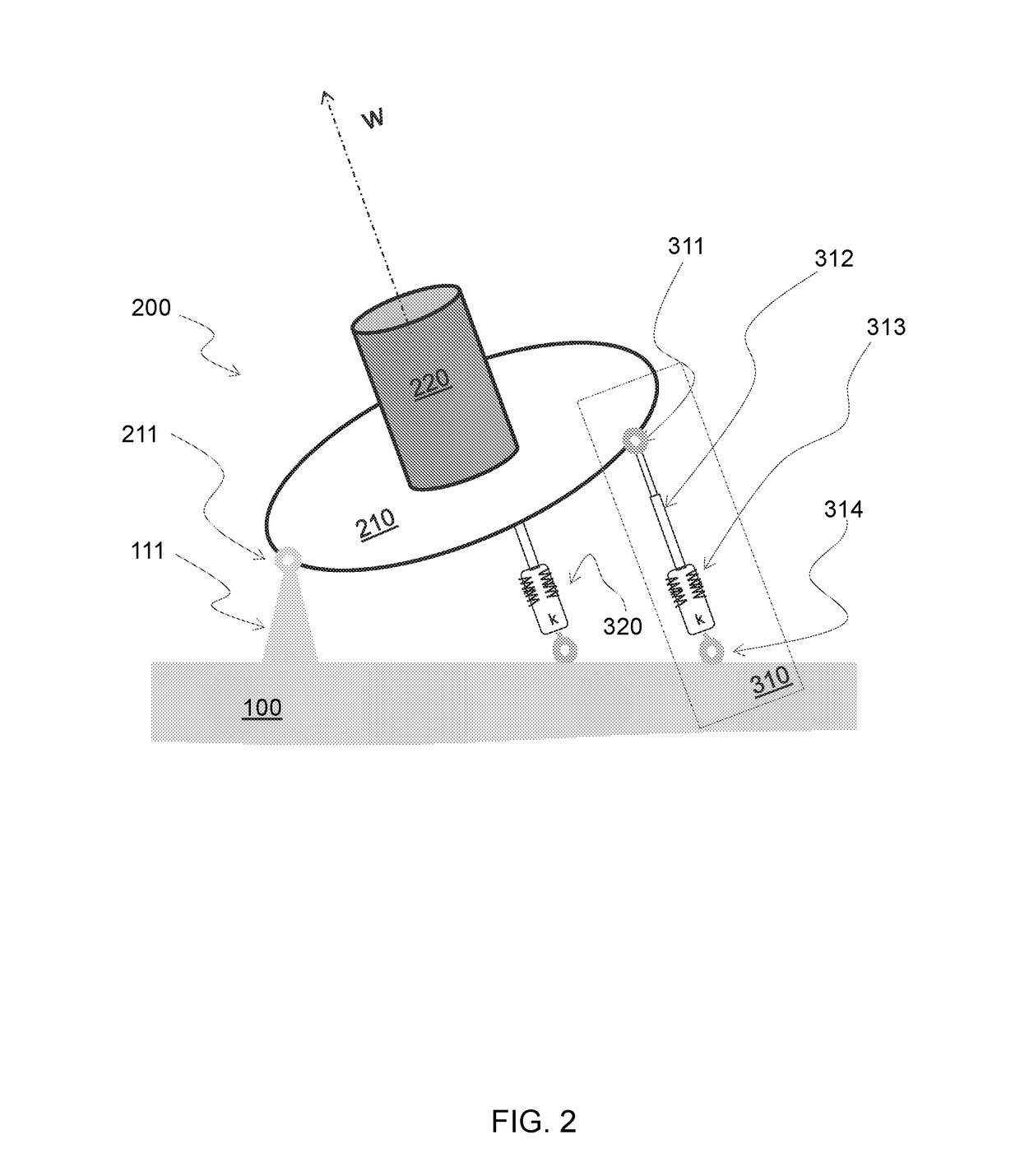Compact stabilized pointing system
a pointing system and stabilizer technology, applied in the direction of shock absorbers, cosmonautic vehicles, transportation and packaging, etc., can solve the problems of high launch cost, very long time, and very short temporal window of visibility, so as to improve the controllability of optical signals, reduce weight and dimensions, and directivity of optical carriers
- Summary
- Abstract
- Description
- Claims
- Application Information
AI Technical Summary
Benefits of technology
Problems solved by technology
Method used
Image
Examples
Embodiment Construction
[0042]FIG. 1 provides an overall view of a nano-satellite in which it is highlighted the presence of an optical transmitter for telecommunications mounted on an adjustable support stabilized according to the invention.
[0043]The number 100 indicates the nano-satellite platform exclusive of any payload. With the number 101 is indicated a Cartesian reference system integral with said nano-satellite platform 100.
[0044]The reference system 101 follows the movements of the nano-satellite platform 100 and thus it moves both with respect to the earth and with respect to other satellites. As already said, with regard to nano-satellite platforms, such movements of said reference system 101 are both translational and rotational, and they are characterized by significant amplitudes in a wide spectrum of frequencies. These characteristics of the movement of the reference system 101 are structurally ascribed to the technology of nano-satellite platforms and is not expected, in the short time, any...
PUM
 Login to View More
Login to View More Abstract
Description
Claims
Application Information
 Login to View More
Login to View More - R&D
- Intellectual Property
- Life Sciences
- Materials
- Tech Scout
- Unparalleled Data Quality
- Higher Quality Content
- 60% Fewer Hallucinations
Browse by: Latest US Patents, China's latest patents, Technical Efficacy Thesaurus, Application Domain, Technology Topic, Popular Technical Reports.
© 2025 PatSnap. All rights reserved.Legal|Privacy policy|Modern Slavery Act Transparency Statement|Sitemap|About US| Contact US: help@patsnap.com



